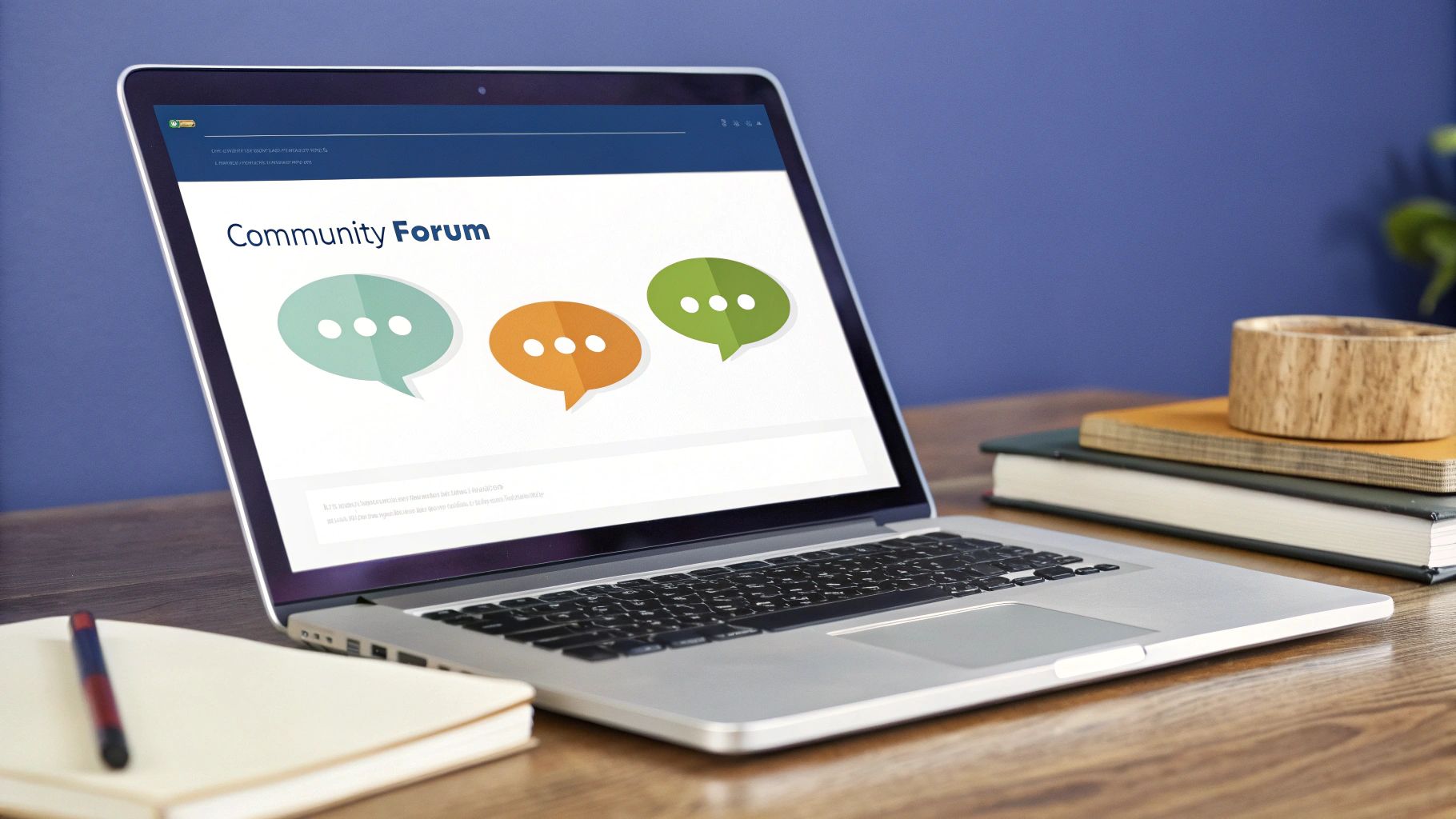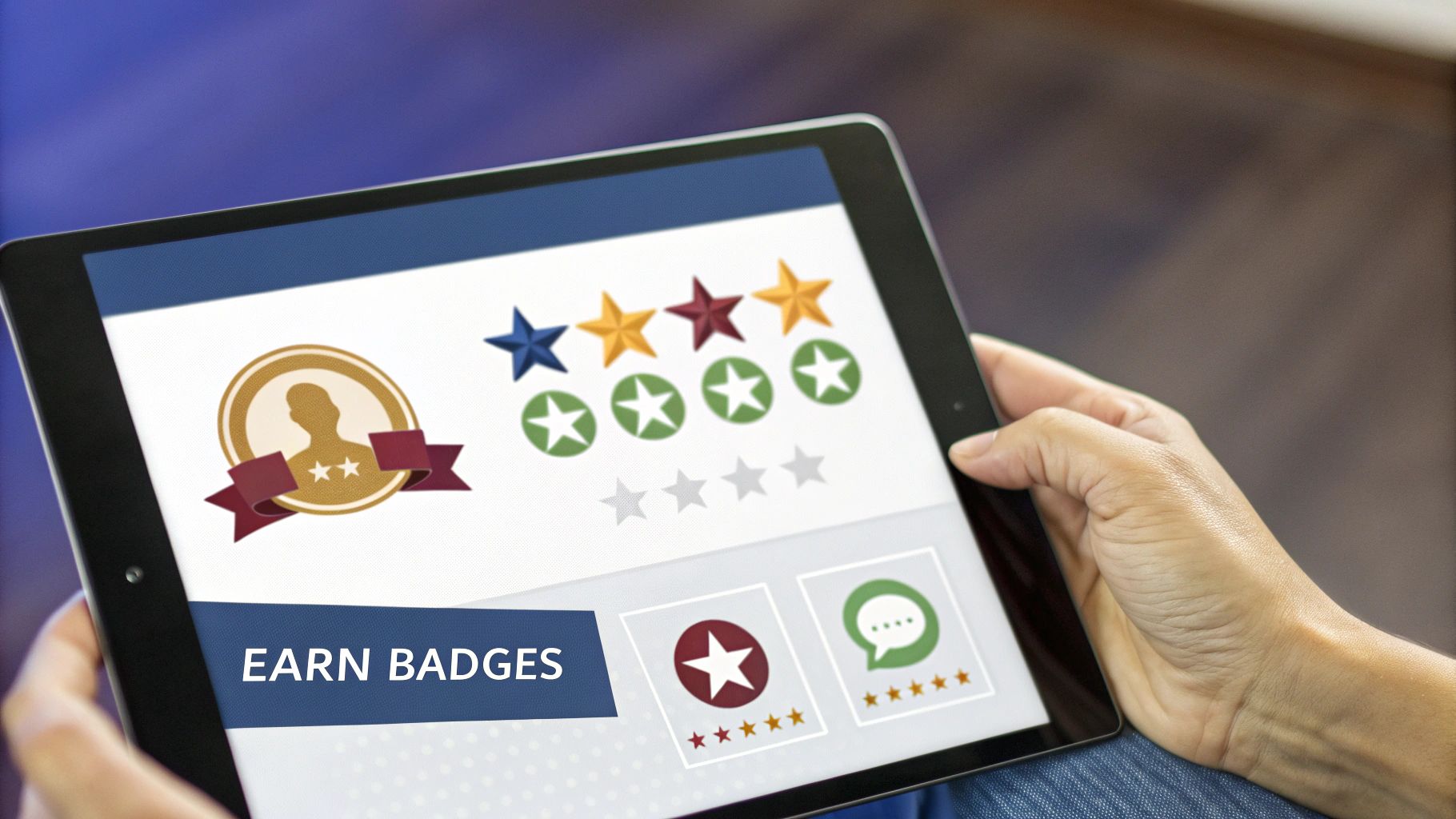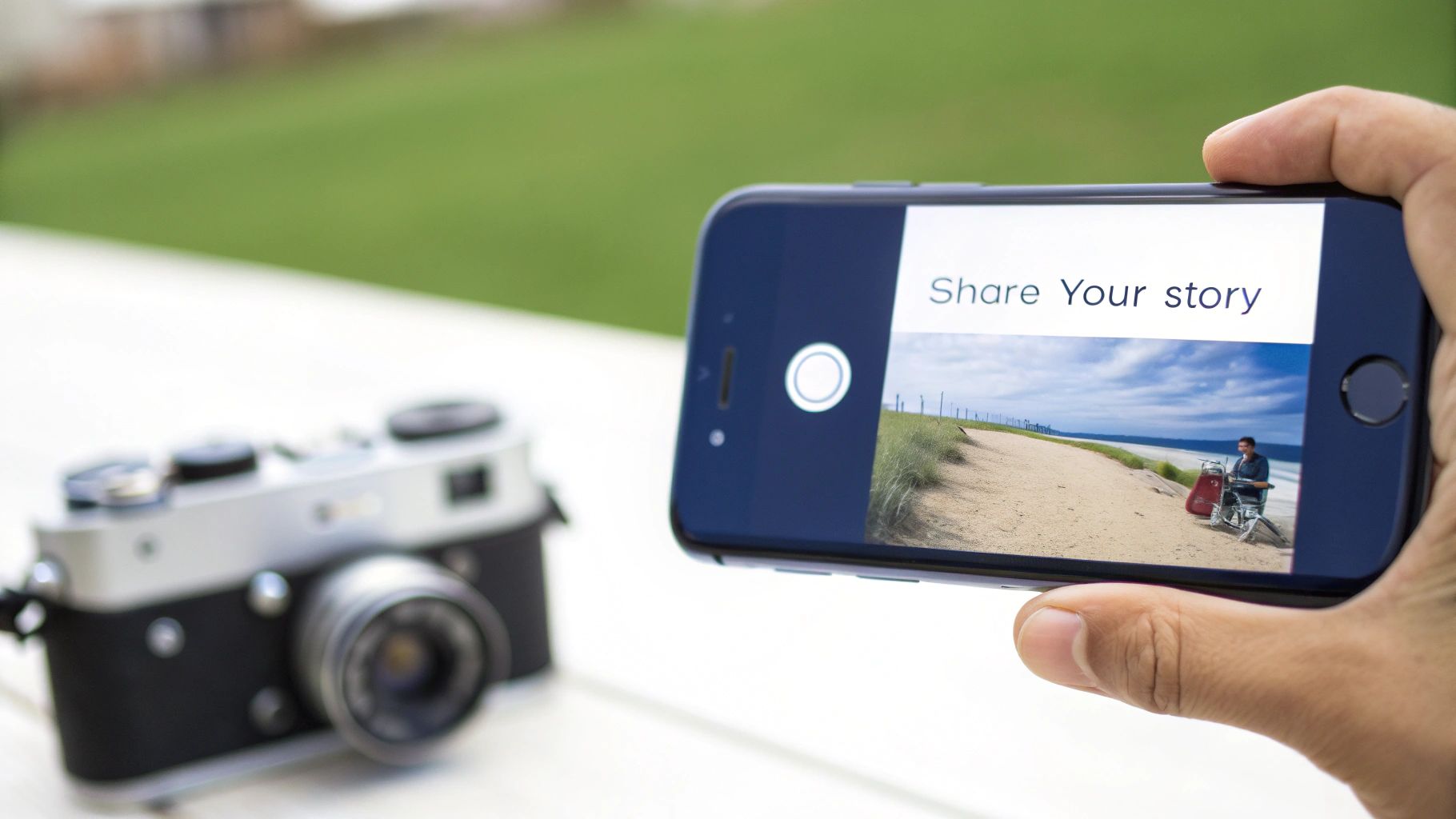
For program managers and service providers, building a thriving community is not just a 'nice-to-have' element; it's the bedrock of sustainable impact. While the goal is clear, fostering belonging, gathering feedback, and driving participation, the 'how' can be complex. In an environment saturated with digital noise, generic outreach falls flat. The real challenge lies in creating genuine connections that empower participants and make them feel seen, heard, and valued. This is where targeted community engagement strategies become critical.
These are not just about sending emails; they are about building a two-way street for communication, collaboration, and co-creation. For organizations using powerful platforms like Unify by Scholar Fund to manage benefits and assistance programs, integrating these strategies can transform administrative efficiency into profound community impact. By automating communications and streamlining feedback, Unify provides the perfect foundation to implement the actionable strategies we'll explore.
This guide moves beyond the abstract, offering a practical roundup of 10 proven methods. Each one includes actionable steps and real-world examples to help you select and implement the right approaches for your program, turning your participant database into an active, engaged, and empowered community.
1. Social Media Communities
Leveraging established social media platforms is one of the most direct and effective community engagement strategies available. By creating dedicated groups on channels like Facebook, LinkedIn, or even Discord, you meet your community members where they already spend their time. This approach lowers the barrier to entry, making it easy for participants to join conversations, share experiences, and access resources without needing to learn a new platform.

For example, a nonprofit running a scholarship program could create a private Facebook Group for its awardees. This space becomes a hub for peer support, deadline reminders, and exclusive workshop announcements. The Salesforce Trailblazer Community and Peloton's Official Facebook Group are massive-scale examples, but the principle is the same: foster a sense of belonging and shared purpose.
How to Implement This Strategy
To succeed, you must be intentional and structured. Start by defining clear community guidelines to set expectations for behavior and communication.
- Establish Clear Guidelines: Post rules prominently regarding respectful interaction, self-promotion, and appropriate content. Enforce them consistently to maintain a safe and productive environment.
- Appoint Moderators: Empower trusted community members as volunteer moderators. This distributes the workload and increases member ownership of the community’s health.
- Create a Content Calendar: Plan weekly themes, discussion prompts, or resource-sharing days. A consistent schedule keeps members engaged and gives them a reason to check in regularly.
This strategy is ideal for programs seeking to build rapport and facilitate organic, member-led conversations. By creating a well-managed online space, you provide a valuable asset that strengthens your program's impact and fosters lasting connections. For a deeper look at building a framework around these interactions, you can explore this detailed community engagement plan.
2. Branded Online Forums & Discussion Boards
Hosting a dedicated online forum on your own domain provides a powerful, centralized hub for community interaction. Unlike third-party social media, a branded forum gives you full control over the user experience, data, and branding. This strategy is excellent for creating a searchable, long-term knowledge base where members can ask questions, find answers, and offer peer support.

This approach creates an evergreen asset that grows more valuable over time as content accumulates. For instance, the Adobe Support Community allows users to troubleshoot complex software issues, reducing the burden on official support channels. Similarly, platforms like Stack Overflow and GitHub Discussions have become indispensable resources for developers by centralizing technical Q&A. The core benefit is building a lasting repository of community-generated knowledge.
How to Implement This Strategy
A successful forum requires a proactive launch and sustained management. Your goal is to build initial momentum that encourages organic participation.
- Seed Foundational Content: Before launching, populate the forum with frequently asked questions, foundational guides, and discussion prompts. An empty forum is uninviting; pre-seeding content gives early visitors a reason to engage.
- Encourage Power Users: Implement gamification elements like badges, leaderboards, or special titles for top contributors. Recognizing and rewarding your most active members encourages them to help mentor others and maintain a positive culture.
- Integrate Single Sign-On (SSO): Reduce friction by allowing members to log in with existing credentials from your main program or other common services. The easier it is to participate, the more likely members are to contribute.
This strategy is one of the most effective community engagement strategies for organizations aiming to build a deep, searchable knowledge base and foster expert-level discussions. By creating a dedicated space for focused conversation, you empower members to support one another and build a valuable intellectual property asset for your program.
3. In-Person Events & Local Meetups
While digital communities are powerful, nothing builds deep, lasting relationships quite like face-to-face interaction. Organizing physical gatherings, from informal coffee chats to structured workshops or conferences, creates unique networking opportunities and a strong sense of belonging. This hands-on approach is one of the most impactful community engagement strategies for fostering genuine connections.

This strategy is epitomized by massive events like Salesforce's Dreamforce or the community-driven WordCamps for WordPress users. However, it’s just as effective on a smaller scale. A local nonprofit could host a quarterly meetup for its volunteers, or a professional development program could organize a skill-building workshop, strengthening bonds and adding tangible value for participants.
How to Implement This Strategy
Successful events require thoughtful planning and a focus on member experience. Start small to test ideas and build momentum before scaling up.
- Start Small and Be Consistent: Don’t aim for a large conference right away. Begin with casual “coffee and connect” sessions or a small user group meetup. Consistency is more important than size in the beginning.
- Partner with Local Organizations: Reduce costs and expand your reach by partnering with local businesses for venue space, sponsorships, or cross-promotion. This also helps embed your program within the local ecosystem.
- Gather Immediate Feedback: Use simple QR code surveys or short feedback forms at the end of each event. Collecting insights while the experience is fresh provides valuable data for improving future gatherings.
This strategy is perfect for programs aiming to transform online acquaintances into a tight-knit network. The shared experiences at in-person events create a powerful foundation for community loyalty and advocacy. To ensure these events align with your broader goals, it's crucial to integrate them into your overall strategy, a process you can explore in this guide to nonprofit program planning.
4. Webinars & Live Q&A Sessions
Hosting interactive virtual events is a powerful method for delivering real-time value and fostering direct engagement. By organizing webinars, live tutorials, or Ask-Me-Anything (AMA) sessions, you create a direct line of communication with your community, positioning your program as an accessible source of expertise and support. This approach enables you to educate, inform, and build trust at scale.

For example, a financial literacy program could host a live Q&A with a financial advisor to answer questions about saving for college. Similarly, HubSpot Academy runs live training sessions to help users master its software, while NASA engages the public with "Ask an Astrophysicist" streams. These events transform one-way information delivery into a dynamic, two-way conversation that builds strong community bonds.
How to Implement This Strategy
A successful virtual event requires thoughtful planning and execution to maximize participation and impact. Start by selecting a topic that directly addresses a community need or a common question.
- Promote Events Extensively: Begin promoting your event at least two weeks in advance across all your communication channels, such as email newsletters and social media, to ensure strong attendance.
- Engage a Moderator: Designate a team member to manage the chat, field questions for the speaker, and handle any technical issues. This allows the presenter to focus entirely on delivering valuable content.
- Share Resources Post-Event: Record the session and distribute it, along with presentation slides and any other resources, to everyone who registered. This extends the value of the event to those who couldn't attend live.
This strategy is one of the most effective community engagement strategies for establishing authority and providing immediate, tangible value. By creating a forum for live interaction, you not only educate your members but also show them that their questions and participation are highly valued.
5. Gamification & Reward Systems
Incorporating game-like mechanics into non-game contexts is a powerful community engagement strategy that taps into our intrinsic motivations for achievement and competition. By adding elements like points, badges, leaderboards, or reputation tiers, you can transform participation from a passive activity into an engaging challenge. This approach incentivizes consistent interaction and recognizes members for their valuable contributions.
For example, Duolingo uses experience points (XP) and daily streaks to motivate language learners, while Stack Overflow awards reputation points and badges for helpful answers, building a user's status within the developer community. A nonprofit could award a “Super Mentor” badge to a volunteer who completes a certain number of mentoring sessions, creating a visible symbol of their dedication and expertise.
How to Implement This Strategy
A successful gamification system requires a thoughtful design that aligns rewards with your program's goals. Start by identifying the key behaviors you want to encourage, such as attending workshops, completing surveys, or helping peers.
- Align Rewards to Desired Behaviors: Ensure that the actions you reward directly support your community’s objectives. If you want more peer-to-peer support, award points for answering questions in a forum.
- Mix Intrinsic and Extrinsic Rewards: Combine rewards that confer status or recognition (intrinsic), like special badges or roles, with tangible rewards (extrinsic), such as program swag, gift cards, or exclusive event access.
- Keep It Fresh with Rotating Challenges: Introduce new monthly or quarterly challenges to maintain member interest. This prevents the system from becoming stale and gives everyone a recurring opportunity to climb the leaderboard.
This strategy is highly effective for programs looking to boost participation rates and create a dynamic, fun environment. By celebrating member achievements, you foster a sense of progress and friendly competition that keeps your community active and invested.
6. User-Generated Content Campaigns
Inviting your community to create and share their own content is a powerful way to foster authentic engagement and build social proof. User-generated content (UGC) campaigns encourage participants to submit photos, videos, or testimonials centered around a specific theme or hashtag. This strategy turns passive community members into active storytellers, allowing them to showcase their connection to your program in their own voice.
Iconic examples like GoPro’s #GoProAwards or Starbucks’ #RedCupContest demonstrate this at a massive scale, but the core principle is adaptable for any organization. For instance, a workforce development program could launch a campaign asking participants to share a photo from their new job with a hashtag like #HiredAndInspired. These submissions become a powerful, genuine testament to your program’s success.
How to Implement This Strategy
A successful UGC campaign relies on clear direction and meaningful incentives. Start by defining a compelling theme that is easy for participants to understand and act on.
- Publish Clear Guidelines: Create and share explicit rules about submission formats, content appropriateness, and how entries will be used. Ensure you have clear terms regarding content ownership and permissions.
- Offer Meaningful Recognition: The best incentive is often recognition, not just prizes. Feature top submissions on your social media channels, website, or newsletter. Tagging and celebrating creators validates their effort and inspires others.
- Promote Entries to Sustain Momentum: Regularly share and highlight submitted content throughout the campaign. This creates a feedback loop that keeps the campaign visible and encourages continuous participation.
This strategy is perfect for programs looking to generate authentic marketing materials and deepen community ownership. By amplifying your members' voices, you strengthen their connection to your mission and demonstrate your impact through their lived experiences.
7. Ambassador & Influencer Programs
Establishing an ambassador or influencer program is a powerful way to scale community engagement strategies by empowering your most passionate members. This approach involves selecting dedicated individuals to act as official advocates, giving them a recognized role in driving word-of-mouth promotion, creating authentic content, and warmly welcoming newcomers. They become an extension of your team, providing a credible and relatable voice that resonates deeply with prospective and current members.
Iconic examples include Airbnb's Superhost program, which recognizes top-tier hosts, or Microsoft's MVP (Most Valuable Professional) award, which honors exceptional community leaders. For a nonprofit organization, this could mean creating a "Student Leader" role for scholarship recipients who mentor new awardees and share their experiences at outreach events. The core principle is to formally recognize and equip your biggest fans, turning their organic enthusiasm into a structured asset.
How to Implement This Strategy
A successful ambassador program requires clear structure and mutual benefit. Start by defining the role and the value proposition for participants.
- Define Clear Roles and Rewards: Outline specific expectations, such as posting on social media monthly or attending quarterly planning calls. In return, offer clear perks like exclusive access, professional development opportunities, or program-branded merchandise.
- Provide an Ambassador Toolkit: Equip your advocates for success. Create a resource hub with brand assets, key messaging points, frequently asked questions, and pre-approved content templates they can easily adapt.
- Host Exclusive Events and Briefings: Make your ambassadors feel valued by providing them with insider information. Host periodic meetings or briefings to share upcoming program news, ask for their feedback, and foster a strong sense of an inner circle.
This strategy is particularly effective for organizations looking to build trust and generate authentic buzz. By formalizing the role of your advocates, you create a scalable system for growth and a deeper sense of ownership among your most dedicated community members.
8. Crowdsourcing & Co-creation Platforms
Harnessing the collective intelligence of your community is a powerful engagement strategy. Crowdsourcing and co-creation platforms allow you to tap into your members' creativity and expertise to generate ideas, solve complex problems, or even design program elements. This approach transforms community members from passive recipients into active partners, fostering a deep sense of ownership and investment in your mission.
For instance, a foundation could launch an "idea portal" asking local residents to submit and vote on proposals for community improvement projects. This not only surfaces innovative solutions but also ensures that funded initiatives are genuinely aligned with community needs. Famous examples like the LEGO Ideas platform, which allows fans to submit new set designs, demonstrate how co-creation can drive both engagement and innovation at a massive scale.
How to Implement This Strategy
A successful co-creation initiative requires structure and transparency to build and maintain trust. Begin by clearly defining the problem or opportunity you want your community to address.
- Publish Clear Evaluation Criteria: Define how submissions will be judged from the outset. Transparency about the process prevents frustration and encourages high-quality participation.
- Offer Meaningful Incentives: Reward contributions with recognition, prize money, or even a revenue-share model if applicable. The incentive should reflect the level of effort required from participants.
- Communicate Transparently About Next Steps: Keep your community informed about which ideas are being considered, why certain submissions were chosen, and what the implementation plan looks like.
This strategy is particularly effective for organizations looking to innovate and ensure their programs are truly community-centric. By inviting your members to co-create solutions, you build a more resilient and impactful organization powered by the very people you serve.
9. Surveys & Continuous Feedback Loops
Systematically gathering feedback is one of the most powerful community engagement strategies for demonstrating that you value member input. By implementing continuous feedback loops through surveys, polls, and ballots, you create a structured channel for members to share their opinions. This approach allows you to collect quantifiable data on satisfaction, measure sentiment, and make informed decisions that directly address community needs.
For instance, a software company might use public roadmap voting to let users prioritize new features, giving them a tangible stake in the product's evolution. Similarly, a service provider could send a simple Customer Satisfaction (CSAT) survey after each interaction to gauge performance. Spotify’s occasional in-app polls asking for opinions on potential features are another great example of collecting targeted feedback without causing disruption.
How to Implement This Strategy
Effective feedback collection is about more than just asking questions; it's about making the process easy and showing you’re listening. Start by identifying the key metrics you need to track, such as the Net Promoter Score (NPS) or overall satisfaction.
- Keep It Short and Simple: To maximize response rates, limit surveys to five questions or fewer. Focus on the most critical information you need to gather at that moment.
- Close the Feedback Loop: Always communicate the results and explain what actions you will take based on the feedback. This proves to your community that their participation leads to real change.
- Test and Refine Questions: A/B test different question phrasing to ensure clarity and eliminate bias. Small changes in wording can significantly impact the quality of the data you receive.
This strategy is essential for any program aiming to be data-driven and responsive to its members' evolving needs. By consistently collecting and acting on feedback, you foster a culture of co-creation and continuous improvement. You can discover more about using data for assessing program outcomes and demonstrating impact.
10. Volunteer & Mentorship Programs
Empowering community members to contribute their time and expertise is one of the most powerful community engagement strategies. Volunteer and mentorship programs transform passive participants into active leaders, fostering a deep sense of ownership and affiliation with your cause. By creating structured roles, you provide a clear pathway for members to give back, whether as mentors, event hosts, or content creators.
This approach builds a sustainable, self-reinforcing community ecosystem. For instance, the Khan Academy leverages peer mentors to support new learners, while the Mozilla Reps program mobilizes volunteers to advocate for an open internet. These initiatives not only scale program impact without significant costs but also create powerful advocates who champion your mission. The core principle is turning engagement into meaningful contribution, strengthening the entire community.
How to Implement This Strategy
A successful volunteer program requires clear structure and genuine appreciation to thrive. Define roles carefully and provide the necessary support to set your volunteers up for success.
- Provide Clear Role Descriptions: Outline specific responsibilities, expected time commitments, and required skills for each volunteer role. This clarity helps members find the right fit and manages expectations from the start.
- Offer Regular Check-ins and Appreciation: Schedule consistent meetings to offer support, gather feedback, and address challenges. Publicly and privately acknowledge volunteer contributions through shout-outs, small tokens of appreciation, or exclusive events.
- Create a Resource Library: Develop a handbook, training materials, and a resource library to equip mentors and volunteers. This ensures consistency and gives them the confidence to perform their roles effectively.
This strategy is perfect for organizations looking to deepen engagement and cultivate future leaders from within their community. By investing in your members, you build a loyal, dedicated base that actively contributes to your program's long-term success and impact.
Community Engagement Strategies Comparison Matrix
Putting Your Plan into Action with the Right Tools
The journey from a list of program participants to a vibrant, engaged community is built one intentional act at a time. Throughout this article, we’ve explored ten distinct community engagement strategies, from the dynamic, real-time connection of social media groups and webinars to the long-term, deep-impact potential of mentorship and co-creation platforms. Each strategy offers a unique pathway to connect with, understand, and empower the people you serve.
The most crucial takeaway is that there is no universal key. The power lies not in choosing one "perfect" strategy but in skillfully blending several to create a comprehensive engagement ecosystem. A dynamic online forum might cater to daily questions and peer support, while a structured ambassador program empowers your most dedicated members to become leaders. Similarly, continuous feedback loops from surveys provide the data needed to refine your in-person events, ensuring they meet the evolving needs of your audience. This strategic integration transforms individual tactics into a cohesive, powerful force for community building.
From Strategy to Sustained Impact
Mastering these approaches is about more than just boosting participation metrics; it's about fundamentally changing the relationship between your organization and your community. When participants feel heard, valued, and connected, they transform from passive recipients of services into active partners in your mission. This deeper connection fosters loyalty, improves program outcomes, and creates a powerful network of advocates who can champion your work.
To successfully implement these community engagement strategies, consider these actionable next steps:
- Audit Your Current Efforts: Before launching new initiatives, assess what you're already doing. Where are you succeeding? Where are the gaps? Use feedback from your existing community to guide this process.
- Start Small and Iterate: You don't need to launch all ten strategies at once. Select one or two that align best with your immediate goals and your community's preferences. Measure the results, gather feedback, and adapt your approach before expanding.
- Invest in the Right Technology: Effective engagement requires efficient systems. Manually managing communications, feedback, and events across multiple channels is unsustainable. Platforms designed for program management can automate administrative tasks, giving you more time to focus on genuine connection. For organizations managing physical spaces like local meetups or resource centers, technology can play a key role. To further explore how technology, such as Wi-Fi solutions, can enhance your engagement efforts, consider these customer engagement best practices for 2025.
Ultimately, building an engaged community is an ongoing commitment to listening, responding, and adapting. By putting these principles into practice, you can create a program that not only delivers essential services but also fosters a true sense of belonging and shared purpose.
Ready to streamline your program's administration so you can focus on building a powerful community? Discover how Unify by Scholar Fund automates payments, data collection, and communication to help you implement your community engagement strategies more effectively. Learn more and see how Unify can transform your work at Unify by Scholar Fund.






